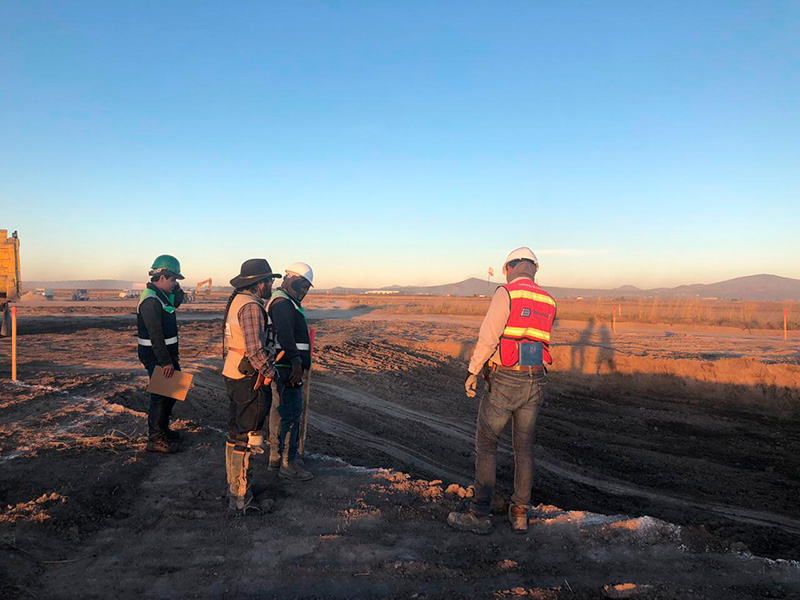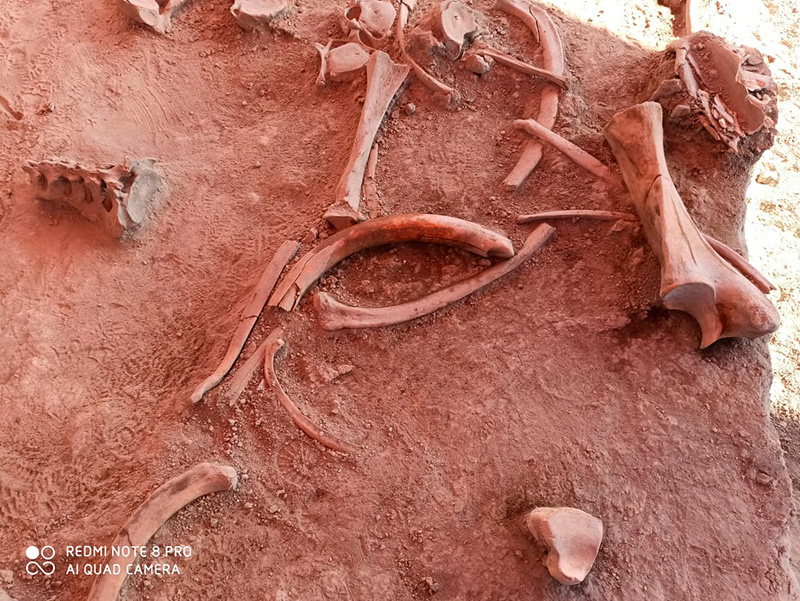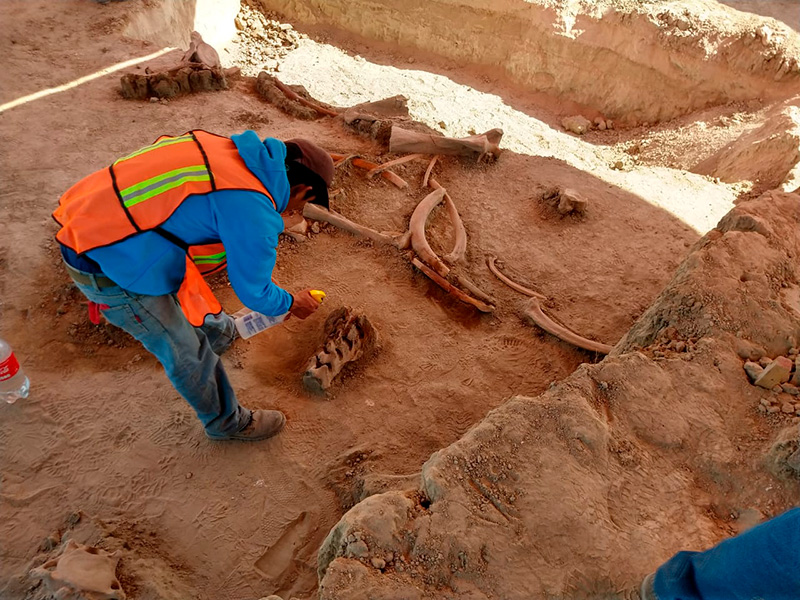A giant mammoth graveyard was just discovered outside Mexico City

Researchers have found a "graveyard" of about 60 mammoths ahead of the construction of an airport just outside Mexico City, according to the National Institute of Anthropology and History (INAH) in Mexico.
In addition to the ice age findings, researchers at the airport-construction site uncovered remains from an entirely different time period — pre-Hispanic times, when 15 humans were buried there, the INAH reported.
Both discoveries shed light on Mexico's history, and give experts an unprecedented opportunity to delve into more than 30,000 years of history, the INAH wrote in a May 22 statement.
Related: 10 extinct giants that once roamed North America
Until now, this area was used by the Santa Lucía Military Air Base, about 45 miles (73 kilometers) north of Mexico City. But it wasn't until October 2019, when construction of the new General Felipe Ángeles International Airport began, that researchers uncovered the ancient remains.
Scientists found the pachyderm bones — including those from male, female and young mammoths — at three sites within the airport's vicinity, said Pedro Francisco Sánchez Nava, the national coordinator of archaeology at the INAH. When the mammoths were alive during the last ice age, this area was on the shore of Lake Xaltocan. It's possible that these heavy animals got stuck in the mud there, and that human hunters took advantage of that, targeting the beasts there, Sánchez Nava said.

Image gallery


The ancient beasts were Columbian mammoths (Mammuthus columbi), a species that lived throughout North America during the Pleistocene epoch (which began 2.6 million years ago and lasted until about 11,700 years ago). The researchers did not find any remains of the furrier woolly mammoth, which lived farther north.
Sign up for the Live Science daily newsletter now
Get the world’s most fascinating discoveries delivered straight to your inbox.
Going forward, a team of 30 archaeologists and three preservationists plan to study the mammoths' remains, which may reveal clues about Pleistocene life, including what the beasts ate, any health conditions that affected their bones, and exactly when they lived.
Meanwhile, the 15 human burials are likely the remains of farmers, given they were buried with grave goods indicative of that lifestyle, including pots, bowls and clay figurines — one of which was of a dog. The ceramic goods found with the individuals suggest they likely lived during the Epiclassic period (A.D. 750 - 950). This pottery was from the Coyotlatelco phase, meaning that it has a distinctive red-on-buff painted style, according to Archaeology Wordsmith.
About 6 miles (10 km) away from the excavations for the new airport is another Pleistocene treasure: two large pits filled with mammoth bones dating to about 15,000 years ago, which archaeologists discovered in November 2019. However, it's unclear whether the mammoths ended up in these pits by chance, or whether indigenous peoples intentionally drove them there during hunts, Adam Rountrey, a collection manager at the University of Michigan Museum of Paleontology, told The New York Times.
There is evidence of humans intentionally hunting mammoths during the last ice age, although not at this site. For instance, this past summer, researchers in Poland announced they had found a javelin embedded in a 25,000-year-old mammoth rib.
- Photos: These animals used to be giant
- Photos: Ice-age animal bones unearthed during LA subway construction
- Photos: Ice age mammoth unearthed in Idaho
Originally published on Live Science.
OFFER: Save 45% on 'How It Works' 'All About Space' and 'All About History'!
For a limited time, you can take out a digital subscription to any of our best-selling science magazines for just $2.38 per month, or 45% off the standard price for the first three months.

Laura is the archaeology and Life's Little Mysteries editor at Live Science. She also reports on general science, including paleontology. Her work has appeared in The New York Times, Scholastic, Popular Science and Spectrum, a site on autism research. She has won multiple awards from the Society of Professional Journalists and the Washington Newspaper Publishers Association for her reporting at a weekly newspaper near Seattle. Laura holds a bachelor's degree in English literature and psychology from Washington University in St. Louis and a master's degree in science writing from NYU.










